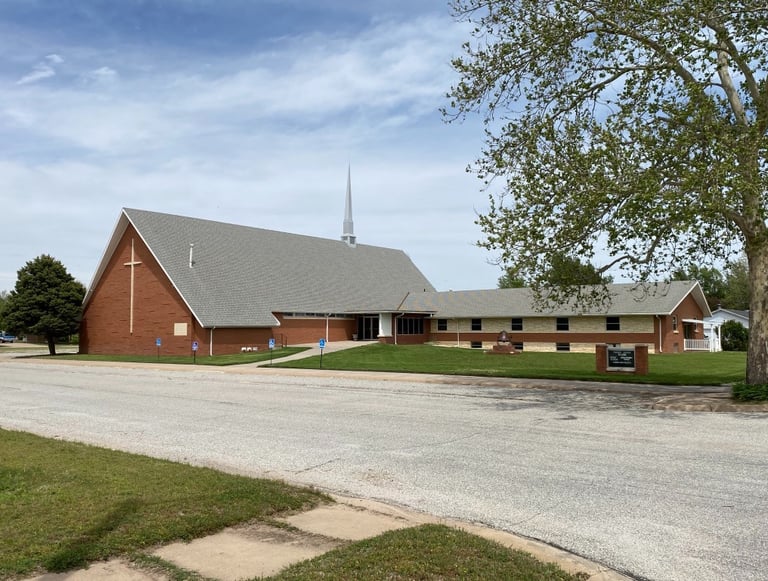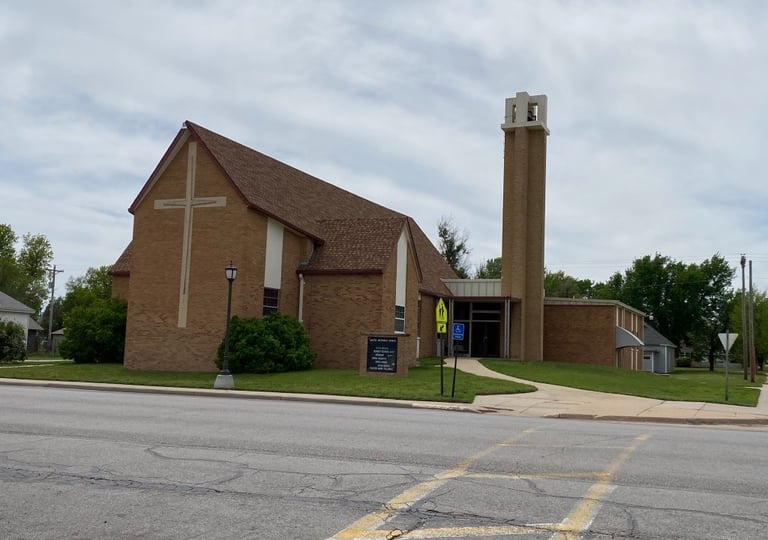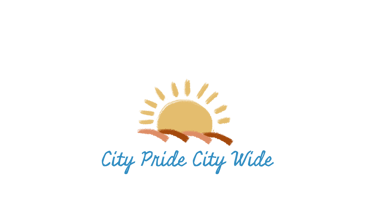OUR STORY
Haviland Church's History
Haviland Friends Church
The pioneering spirit was an important characteristic of the American Quakers (also called Friends). They were farmers who were quick to move across America with other pioneers. Accordingly, B. H. Albertson, Lindley Pitts, Jabez Hall and James Gulley left Indiana for Kansas in early 1884 and arrived at Rose Hill, Kansas in June. Leaving their families in that Quaker settlement, the men traveled in their prairie schooners past the "thriving little town of Wichita" toward unclaimed land farther west. On reaching Dowell (now Wellsford), they learned of available sections beyond and each staked claims northeast of the present site of Haviland. Their families were moved to the farms and letters were written to Indiana urging more Quakers to join the settlement. By 1885, more than twenty-five families had arrived.
Those early settlers felt that a place of worship was of prime importance. The first Sunday School was held in the James Gulley home, an unfinished house 12' square. They next worshipped in the half dugout house of Gurney Mills and later in the B. H. Albertson home, a 13' x 26' board-covered sod house. Here, in 1885, the congregation was organized as Liberty Monthly Meeting of Friends. in 1886, the name was changed to Haviland Monthly Meeting in honor of a Michigan Quaker lady, Laura S. Haviland.
The increasing attendance in homes made it necessary to have a larger meeting house. The planning committee decided the expense was too great for hauling lumber 40 miles from Larned, the nearest railroad, so they chose to build a sod structure. Jabez Hall donated a two-acre plot in the southwest corner of a section one mile north of Haviland. Blocks of buffalo grass sod were cut and laid to form a building 30' x 24' with a door in the south end and two windows on each side. Since meetings were held before the floor or seats were in, boards were placed over bunches of shingles and spring wagon seats were used. With all labor donated, the cost of the building was $68.00. The Sod Church, built in 1885, also served as a school room until 1887.
In 1886, the growing congregation numbered 289 in Sunday School. While some changes had occurred gradually, many services were of the silent, informal type. At an appointed time, people went reverently to their seats for worship. No pastor presided. Until 1908 Haviland Monthly Meeting appointed those of their own fellowship to serve at different times as resident ministers. At the head of the meeting sat ministers and elders. Perhaps a minister would feel "moved" by the Holy Spirit to preach or pray, but never to sing. Sometimes the hour passed in silence. Meetings were dismissed by "timers" who so indicated by standing and shaking hands.
Services continued in the Sod Church until August 1893, when the congregation of 375 had definitely outgrown its earthen walls. Trustees of the newly built Friends Haviland Academy offered use of the second floor of Academy Hall for "First Day and Fourth Day" meetings. The Quakers paid $25.00 yearly rental for this privilege. In 1905 work was begun on a new church on the corner of Kingman and Oak. The white frame church with its attractive architectural design, steeple and bell tower, was completed in 1906. Home L. Cox was the first salaried pastor beginning in 1908.
By 1960, the need for more spacious facilities was evident and a building fund campaign began. In December, 1963, the completion of a new church with full basement provided a large sanctuary, education wing and fellowship hall. It was constructed of concrete block faced with Roman tile and located south of the old building and is still active today. The old frame building was removed and the space made into a parking lot.


Haviland United Methodist Church
When the first homesteaders settled in and around what is now known as Haviland, there were several religious faiths represented. After establishing their homes they built school houses and worshipped in them until they could build churches. A Methodist class was organized in a small frame school house as early as 1888. Circuit riders supplied the pulpit from time to time. This class, discontinued for several years, was later reorganized by Peter Mawdslay of Greensburg during the years of 1899-1903. This became a preaching point on the Greensburg Circuit. Services were held in Woodman Hall in Haviland. In the spring of 1902 the class met in the Empire school House one mile south of Haviland. They continued meeting there until a new church was built. In September, 1902 a Ladies' Aid was organized at Mrs. Fred Swaim's house with twelve charter members. They bought the one and one-half lots on which the church now stands. A charter was recorded in Topeka on March 31, 1903 for a Methodist Episcopal Church in Haviland, Kansas. There were 40 charter members. The new frame church was dedicated on November 5, 1904. The left wing of the church was built in 1911 with a basement being built in the fall of 1921. The church continued to flourish in spite of hard times, especially in the 30's. By 1935, 60 new members had been added to the congregation bringing the total membership to 183. In May, 1939 the Methodist Episcopal Church; the Methodist Episcopal Church South; and the Protestant Methodist Church united to form The Methodist Church. In October, 1939, the Southwest Kansas Conference and the Northwest Kansas Conference joined together, forming the Central Kansas Conference, of which Haviland was a part. 1940 was a significant year. On August 4, the Women's Society of Christian Service was formed (uniting the Women's Foreign Missionary Society and the Ladies' Aid). There were 53 charter members. In 1940 the name of the youth group was changed from Epworth League to Methodist Youth Fellowship. Sunday School continued to grow and was now divided into two departments: Junior and Senior, with an enrollment of 206. The frame church had served the community well, but the building was becoming inadequate to meet the needs of the congregation, so on September 3, 1947, a committee met and decided on a five-year plan for a new church building. Due to drought in the early 50's, which created financial hardships, the building plan was delayed. The final drive for the new church started in April, 1958. Groundbreaking was held in May and by December 13th, the cornerstone had been laid. Services were held in the Grade School while the new building was being built. The first services were held in the new building on March 15, 1959. New developments were taking place across Methodism. Though conversations concerning union between the Methodist and the Evangelical United Brethren churches had gone on over a long time, it was not until April 23, 1968 in Dallas, Texas that the Plan of Union was made effective by the Uniting Conference. Thus, the name was changed to United Methodist Church. In July 30, 1968 Haviland became part of the Kansas West Conference of the United Methodist Church. In 1973, the W.S.C.S. and the Wesleyan Guild became United Methodist Women. Through the years the missionary outreach of this organization has remained a basic part of its purpose. The work of the church must go on. Those who have gone before have laid a firm foundation upon which future generations must build. Long may it continue to advance the cause of God's kingdom.



